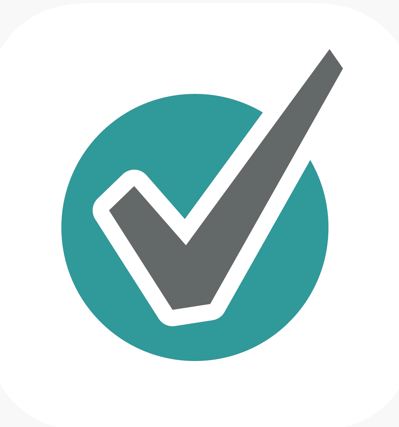
6 Best Spanish Grammar Checkers of 2024
Automated grammar checkers are obviously not ever going to replace the advice and corrections of a native speaker.
But automated checkers can still be a very useful tool, as long as you understand how they operate and don’t rely on them too heavily. You can run your texts through them quickly, and they may save you from a few errors.
In this post, you’ll find six Spanish grammar checkers you can find online and who they’re best for. I’ll also show you what their strengths and limitations are, so that you can get the most out of them as you continue to perfect your Spanish writing.
Contents
- Best for Spanish Learners Overall: LanguageTool
- Best for Beginners: SpanishChecker
- Best for Rephrasing Your Text: Reverso
- Best for Longer Texts: Scribbr
- Best for Quick Checks: My Stilus
- Best Paid Site: Plagly
- And One More Thing…
Download: This blog post is available as a convenient and portable PDF that you can take anywhere. Click here to get a copy. (Download)
Best for Spanish Learners Overall: LanguageTool
This is the automatic grammar checker that I’d recommend for most Spanish learners, as long as you have at least a fair understanding of grammar terms in Spanish, which is the language of the explanations.
Here’s what you should know about this tool:
- The integrated spellchecker is decent, although you should be aware that it may mistakenly flag some words and proper nouns. Among the words that it unnecessarily flagged for me was WC.
- Another issue to be aware of with the spellchecker is that if you have a spelling mistake in a sentence, this can sometimes confuse the grammar check.
For example, if you write ¿Quien pinto la cuadro? (Who painted the painting?), the site will correctly suggest quién instead, but it won’t tell you that pinto should have an accent (pintó) and that there’s a gender disagreement: el cuadro (the painting).
- This checker tends to correctly flag gender issues with articles (un, una, etc.), which is great as these are common mistakes for Spanish learners at all levels.
These are labeled as a posible falta de concordancia de género (possible lack of gender agreement), but it’s up to you to figure out what the issue is, exactly—you can look your noun up at WordReference.com if you don’t spot the error immediately.
- It doesn’t always seem to catch errors of agreement between adjectives and nouns. Type in unos casas rojos and it doesn’t flag unos or rojos. (It should be unas casas rojas, or “some red houses.”)
- You also should be prepared to catch your own failings with prepositions. I wrote está a media hora a la Sagrada Familia and it didn’t make a peep. It should be está a media hora de la Sagrada Familia (it’s a half-hour from the Sagrada Familia).
Best for Beginners: SpanishChecker
 While this grammar checker erroneously flagged more issues and made more suggestions that were incorrect than LanguageTool, it did correctly flag some issues that LanguageTool missed, and so may be best for checking certain areas of grammar.
While this grammar checker erroneously flagged more issues and made more suggestions that were incorrect than LanguageTool, it did correctly flag some issues that LanguageTool missed, and so may be best for checking certain areas of grammar.
Another advantage is that its explanations are available in English, which could make this a more useful tool for some learners. (This option is available automatically if you’re in an English-speaking country; if you’re living or studying in a Spanish-speaking country, you’ll have to change the language by scrolling down to the very bottom right and clicking on the teeny English button.)
Here’s what you should know about SpanishChecker:
- The spellchecker is also decent, though it erroneously flagged more words than LanguageTool.
- It points out some gender disagreement issues with articles, and it attempts to do the same with adjectives. Just be aware that it often has trouble identifying which adjective goes with which noun, making its corrections in this area a bit haphazard.
- It likes to suggest placing the adjective after the noun, although for stylistic reasons you may sometimes want to have it in front.
- It may also erroneously suggest an adjective in place of an adverb in that position; for example, it told me to write una cocina buena equipada instead of una cocina bien equipada (a well-equipped kitchen), which was already correct.
- It helpfully points out some minor mistakes that English speakers might make, like placing a comma before the y (and) in a list of three things.
- You should be ready to use your own judgment on suggestions it makes for word order and word choice in some situations. For example, it suggested cuatro (four) instead of cuarto when I was talking about a room.
Best for Rephrasing Your Text: Reverso

With Reverso’s grammar checker, you can correct your writing and also use the rephrasing tool to discover further ways to express what you are trying to say.
Simply paste your text into the Spanish grammar checker and either click “Check” for a grammar check or “Rephrase” to see your text rewritten into a variety of options.
Here are some important notes about Reverso:
- Reverso offers some free browser extensions available for platforms like Chrome and Mac, meaning you can access the grammar checker while writing other texts, from emails to documents on Word.
- The Spanish grammar checker available to access on Reverso’s website for free has a limit of 360 characters. If your text is longer than this, I would recommend breaking the text down into smaller sections. Alternatively, if you register using your email, you’ll be able to check longer texts.
- It’s worth noting that Reverso may sometimes not detect wrong prepositions. For example, when I checked the sentence gracias para darme el regalo (Thank you for giving me the gift) it marked the sentence as correct even though the correct preposition should be por instead of para.
- While this checker will often highlight missing accents, like in the phrase ¿Como se llama el capital de Espana? (What is the name of the capital of Spain?) where como (what) is corrected to cómo and Espana (Spain) is changed to España, it may have difficulties correcting a word’s gender when the same word has two genders with different meanings. For example, in the above phrase, it should be la capital (capital city) rather than el capital (capital [money]).
Best for Longer Texts: Scribbr

Simply paste your text into the grammar checker and it’ll underline any errors it can find in the text in red, so they are easy for you to spot. By hovering over the word, you’ll find a suggested correction provided by the grammar checker.
Here are some things you should know about this program:
- You’ll be able to check a large amount of text on this grammar checker in one simple search. Unlike some of the other grammar checkers, this one is great for longer texts or pieces of writing as it will allow you to check thousands of words at a time.
- Instead of individually approving each correction, if you’re happy with the corrections provided by this checker, you can simply click “Fix All Errors,” saving you some extra time.
- If you’re looking for a more in-depth check from a native Spanish speaker, on Scribbr you can also pay for a native Spanish-speaking editor to check your writing.
- In most cases this language checker will pick up on common errors such as mixing up ser and estar and por and para. For example, if I type mi amigo está amable (my friend is kind), this checker will correct está to es and in the phrase mi amigo está casado (my friend is married), it correctly changes está to es.
Best for Quick Checks: My Stilus
My Stilus offers some cool features for Spanish grammar checking. It checks not just grammar, but spelling as well as style. So if you’ve got some written material and want to be sure it’s on track for all three points, this is a slick site to use.
The resource was a breeze to use. I just did a quick copy and paste and received instant feedback. It caught most of my intentional mistakes, including several misspelled words. However, I also tried finding a sample paragraph with errors and it had a bit more trouble with these. I’ll break down my findings, and the program’s features, below.
- My Stilus actually recognizes the variants in the Spanish language. It sees if you’re using the vocabulary from Central American Spanish, Mexican Spanish, Caribbean Spanish and four other Spanish variations.
This means that if you submit a piece written with predominantly Cuban Spanish idioms and vocabulary, it recognizes those words and checks accordingly. This is very beneficial for those who speak and write one more than another.
A friend speaks Mexican Spanish, so he writes using vocabulary common in Mexico. I uploaded a bit of his writing and the checker had no issues with recognizing the slangy word he inserted.
- Ease of use is helpful. The process is smooth and streamlined, and checking a couple of writing samples took no time at all.
- This grammar checker has interactive proofreading, which is a great feature. When a need for a correction is detected, the site offers suggestions for corrections. This provides the opportunity to see what’s wrong and to choose from correction options—rather than having mistakes corrected automatically.
- You can customize what and how the program checks in your text, choosing from a wide variety of what can be checked, language variants (as mentioned above) and even types of dictionaries (for more specialized language).
- The checker easily picks up on most grammar concepts, like subject-verb agreement (even when the subject and verb are separated by an aside between commas). At the same time, it misses some of the more nuanced issues, like completely overlooking a misuse of soy/estoy in estoy profesora de español (it should be soy profesora de español — I am a professor of Spanish).
- The program had some trouble differentiating between articles and prepositions. For example, I typed preparo la desayuno and it suggested that I correct it to preparo al desayuno, assuming I’d made a typo rather than misgendering the word desayuno. (It should be preparo el desayuno — I prepare breakfast.) It also misses incorrect preposition use quite often.
- There are a few different plans and prices available, as well as a free version. Currently, the free version allows you to check 5k words a month.
Best Paid Site: Plagly
Plagly is a site that many of you might already be familiar with as a site to check for plagiarism. Good news, though—they also check written pieces for Spanish language learners!
This is a simple copy-and-paste maneuver and most misspellings are easily detected.
Let’s take a peek at its features and the pros and cons:
- The program is color-coded, separating issues by type. If a style issue is problematic, it shows in one color. If it’s a spelling error, it’s highlighted in a different color. And if there’s a grammar item that needs to be addressed, it’s pointed out in yet another color. Spotting and understanding the issues is easy because they’re so clearly highlighted.
- The color-coding check makes it a snap for users to see where their Spanish writing challenges lie. If you consistently have that grammar color pop up, you know that it’s time to pay extra attention to your grammar practice. That holds true for spelling or style, also.
- An awesome additional feature is that some errors have an explanation you can check out in Spanish. Even when an explanation isn’t available, you can see a brief note (in Spanish) about what the error is. For example, the program picked up on y incluso, stating that when a word begins with “i-” or “hi-,” the y changes to an e (making it e incluso — and even).
- Punctuation, including commas and periods, is also checked for accuracy.
- It’s possible to add words and phrases to their dictionary. Doing so means that they won’t possibly get pointed out as errors if you use them a lot. This is especially beneficial to anyone who consistently uses topic-specific, or uncommon, vocabulary.
- To use this grammar checker, you’ll need to create an account. However, if you create an account, you’re required to enter your credit card information in order to continue to the free trial—you can cancel any time, but it’s something to be aware of.
Of course, the goal should be to improve your grammar so you don’t need tools like these as frequently. Some great ways to do that are to use a vocab/grammar driller like Duolingo, a more traditionally-styled app like Busuu, or a virtual immersion program like FluentU.
FluentU takes authentic videos—like music videos, movie trailers, news and inspiring talks—and turns them into personalized language learning lessons.
You can try FluentU for free for 2 weeks. Check out the website or download the iOS app or Android app.
P.S. Click here to take advantage of our current sale! (Expires at the end of this month.)

I hope that this gives you a great base to move forward as you continue to work on your Spanish writing, whether it’s for concrete tasks like mine, just for language learning or for the pleasure of writing itself.
Download: This blog post is available as a convenient and portable PDF that you can take anywhere. Click here to get a copy. (Download)
And One More Thing…
If you've made it this far that means you probably enjoy learning Spanish with engaging material and will then love FluentU.
Other sites use scripted content. FluentU uses a natural approach that helps you ease into the Spanish language and culture over time. You’ll learn Spanish as it’s actually spoken by real people.
FluentU has a wide variety of videos, as you can see here:

FluentU brings native videos within reach with interactive transcripts. You can tap on any word to look it up instantly. Every definition has examples that have been written to help you understand how the word is used. If you see an interesting word you don’t know, you can add it to a vocab list.

Review a complete interactive transcript under the Dialogue tab, and find words and phrases listed under Vocab.

Learn all the vocabulary in any video with FluentU’s robust learning engine. Swipe left or right to see more examples of the word you’re on.

The best part is that FluentU keeps track of the vocabulary that you’re learning, and gives you extra practice with difficult words. It'll even remind you when it’s time to review what you’ve learned. Every learner has a truly personalized experience, even if they’re learning with the same video.
Start using the FluentU website on your computer or tablet or, better yet, download the FluentU app from the iTunes or Google Play store. Click here to take advantage of our current sale! (Expires at the end of this month.)







